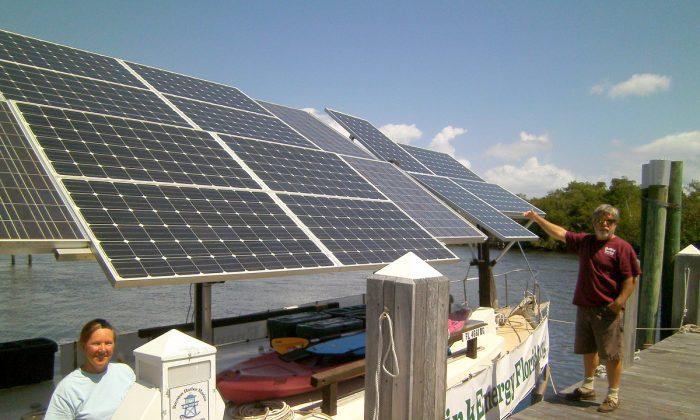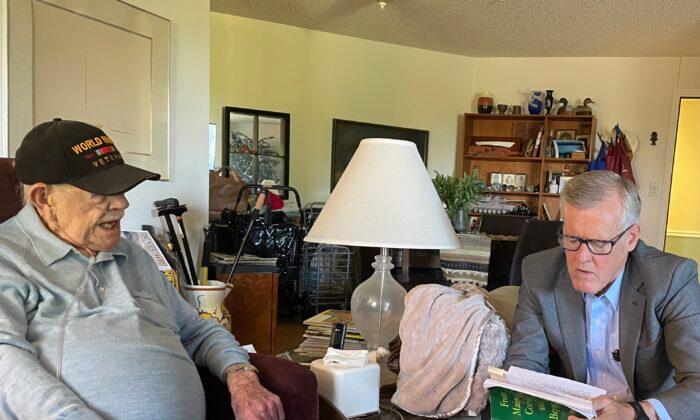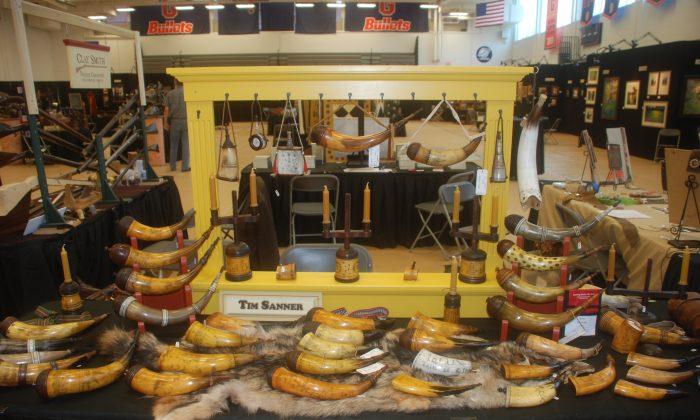Their website is called shipofimagination.com. Appropriate for this most unusual converted ferro-cement cutter rigged ketch powered by 18 solar panels and two imaginative sailors. The name painted on the stern proclaims the ship ‘Archimedes’ with its home port ’Space Coast, Florida.’
“I saved it from becoming an artificial reef. I bought the boat six years ago. I let it sit four years before I did anything to it. About a week after I got the boat I was in a real bad car accident. When I was better I didn’t want to work on it so went sailing on another boat for a time,” Carter Quillen said.
The crew consists of Carter, a graduate of the Florida Institute of Technology in Melbourne, his companion Diane Eggers and their little Jack Russellesque terrier Radar. “He is really a good watchdog. We anchored and were asleep. Radar started barking. We were grounding and he heard the noise of the keel scraping on the bottom and woke us up. Maybe we should call him Sonar,” Carter laughed.
It took the intrepid sailors three winters to get the cement hulk in shape. They got it running and decided to take it for a cruise. Work was done on a limited budget. What the crew did not stint on was state of the art electrical equipment that would accumulate and convert energy from the ship’s large solar panels to power needed for the engine, air conditioning unit, lights and appliances aboard.
Carter, Diane and Radar began their journey from Pirates Cove, Alabama. They motored along the Florida Panhandle, cruised the west coast, “And now we are going to do the Intracoastal Waterway to Jacksonville,” Carter said. The trip in all will cover some 1,400 miles.
“We have a diesel engine as well. We can cover 15 to 30 miles a day depending on conditions. If we use the diesel engine we can cover 60 to 70 miles a day,” Carter explained. It requires about four hours to charge the ship’s batteries. The solar panels need sun to work thus the cruise does not generally get underway until late morning once the batteries are charged.
When asked how he got the idea for a solar powered boat, Carter replied, “I was helping an older woman in Otero, Florida. She was recovering from cancer. She was throwing out an old golf cart. I decided to use the parts to make her an electric boat so she could cruise up and down the river. It worked great. So this evolved.”
‘Archimedes,’ proclaimed “The world’s largest solar powered concrete boat,” has a cause. A banner on the side reads ‘RethinkEnergyFlorida.org.’ “We are cruising for sustainable Florida. ‘Cruiseaid’ is a grassroots effort to create public awareness about important energy issues in the Sunshine State. We are way behind other states in the use of solar power,” Carter said.
‘Archimedes’ solar panels can collect about 35-kilowatt hours of energy per day. It requires something more than one kilowatt hour of power to travel a mile on electricity. “With ten kilowatt hours stored in the batteries we can cruise six to eight miles,” the ship’s skipper said. He posed on the dock at Boynton Beach’s Municipal Marina where they were offering Micro Power Systems Workshops.
For now the 46-foot long, 14-foot wide, 20-ton displacement converted ketch is heading to Jacksonville where it will undergo adjustments until the crew decides on additional solar powered adventures for the unusual ship. For more information visit their website at www.archimedesprojectblogspotspot.com.






Friends Read Free